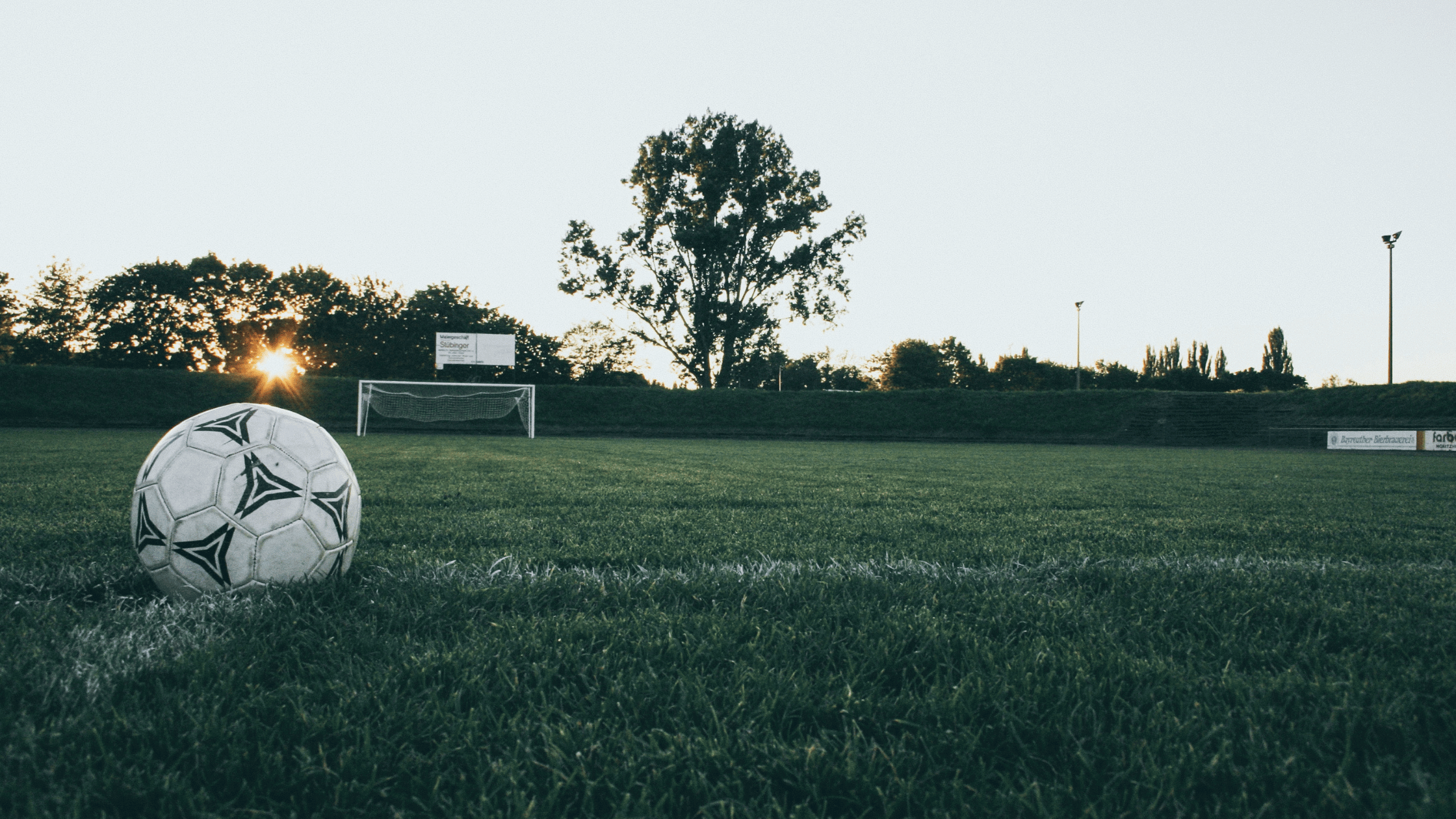Comparing Injury Risks on Artificial Turf and Natural Grass in Sports

Physical Therapist, PT, DPT // EW Motion Therapy Meadowbrook
Sports play a significant role in our lives, promoting physical fitness, teamwork, and competition. Whether played professionally or recreationally, safety is paramount in any sport. One debate that has gained attention in recent years is comparing the injury risks associated with playing on artificial turf versus natural grass. Both playing surfaces serve different purposes, and our team at EW Motion Therapy can assess your movement and tailor treatment no matter which surface you play on the most. But even if you decide that our physical therapy doesn’t fit your needs, you can still read on as we delve into the differences between these two playing surfaces and how they impact various sports, highlighting the most common injuries in each case.
Artificial turf vs. natural grass: understanding the basics
Artificial turf, often made of synthetic materials like rubber and plastic, has gained popularity due to its low maintenance requirements and consistent playing surface. On the other hand, natural grass offers a more traditional playing experience. Let's explore how these surfaces differ in terms of injury risks.
Common injuries on artificial turf and natural grass
Different sports played on varying surfaces can lead to specific types of injuries. Let's look at some of the most common injuries associated with each playing surface:
Artificial turf injuries
- Turf burn: The harder surface of artificial turf can cause abrasions and friction burns when players slide or dive.
- Muscle strains: Reduced shock absorption on turf may increase the risk of muscle strains, especially in sports involving quick direction changes.
- Ligament sprains: Non-contact sports injuries, such as ACL (anterior cruciate ligament) tears, are more prevalent on artificial turf due to their lack of shock absorption.
- Concussions: The firmness of artificial turf can lead to higher-impact collisions, increasing the risk of head injuries.
Natural grass injuries
- Ankle sprains: Uneven terrain on natural grass fields can lead to accidental twists and sprains, particularly in sports requiring sudden direction changes.
- Contusions: Falls on natural grass can result in bruises and contusions, although these injuries are generally less severe than turf burns.
- Cuts and abrasions: While not as common as on turf, grass fields can have hidden debris that might cause cuts and scrapes during play.
- Knee injuries: Grass fields can become muddy and slippery, potentially causing players' feet to stick in the ground, leading to hyperextension injuries.
Impact on different sports
Injury risks can vary greatly depending on the sport and the surface on which it is played. Here are some examples of how artificial turf and natural grass can affect these sports:
Soccer/football
Artificial turf: Artificial turf’s consistent and often harder surface can lead to more abrasions, especially during sliding tackles. Studies have shown that there may be a higher risk of non-contact injuries like muscle strains and ligament sprains on artificial turf due to its reduced shock-absorbing capabilities.
Natural grass: Grass fields tend to have more give and shock absorption, which can help reduce the impact on joints and muscles. However, natural grass fields can become uneven, leading to potential tripping hazards.
American football
Artificial turf: Artificial turf is common in American football due to its durability. While it provides a consistent surface for players, it may contribute to more traumatic injuries, including concussions, due to its harder nature.
Natural grass: Natural grass may provide better shock absorption, reducing the force of impacts. However, grass fields can become muddy and slippery, increasing the risk of non-contact injuries.
Sprint and track sports
Artificial turf: Artificial turf can offer a firm and predictable surface for sprinting and track events. However, the lack of cushioning may increase the risk of stress fractures or shin splints.
Natural grass: Natural grass tracks are less common but provide a more forgiving surface for runners. Nevertheless, uneven terrain can lead to twists and sprains.
Baseball/softball
Artificial turf: Artificial turf is used in some baseball and softball fields for low maintenance. While it provides a consistent fielding surface, diving and sliding on turf can cause abrasions and burns.
Natural grass: Natural grass fields offer a more traditional baseball experience. However, irregularities in the field can affect ball bounce and player footing, potentially causing injuries.
Mitigating injury risks
Reducing the risk of injuries on artificial turf and natural grass involves a combination of proactive measures, proper equipment, and player awareness. Here's a breakdown of strategies to mitigate injury risks on both playing surfaces:
On artificial turf
- Proper footwear: Wear sports-specific footwear with turf shoes or cleats designed for artificial turf. These shoes provide the necessary traction without excessively sticking to the surface, reducing the risk of twists and strains.
- Shock-absorbing underlay: Some artificial turf systems come with shock-absorbing underlay materials that can help cushion impacts, reducing the strain on joints and muscles.
- Field maintenance: Regular artificial turf maintenance ensures an even playing surface. Address any issues like tears, wrinkles, or seams that could cause trips or injuries.
- Proper warm-up: Engage in a thorough warm-up routine that includes dynamic stretches and movements to prepare muscles and joints for the demands of the sport.
- Correct technique: Emphasize proper techniques and body mechanics to reduce the risk of non-contact injuries. Focus on safe tackling, cutting, and landing techniques.
- Player awareness: Educate athletes about the potential risks of artificial turf and encourage them to adjust their playing style accordingly. Emphasize the importance of controlled movements.
On natural grass
- Appropriate footwear: Choose footwear with cleats suitable for grass fields. The length and type of cleats should match the grass conditions to provide traction without causing undue stress on joints.
- Field inspection: Before playing, inspect the grass for any uneven areas, holes, or debris that could pose a tripping hazard. Address any issues with the field management.
- Maintain grass length: Keeping the grass at an appropriate height can reduce the risk of slips and trips. Long grass can increase the chances of catching a cleat, while very short grass may lack cushioning.
- Footwear maintenance: Ensure cleats are in good condition and properly attached to the shoes. Loose or worn-out cleats can lead to instability and potential injuries.
- Balance and core training: Strengthening your core muscles and improving balance can enhance stability on uneven surfaces, reducing the risk of ankle sprains and falls.
- Adequate warm-up: Like on artificial turf, engage in a comprehensive warm-up routine to prepare your body for the specific movements required in your sport.
General strategies for both surfaces
- Stay hydrated: Proper hydration helps maintain muscle function and reduces the risk of cramps and fatigue, which can contribute to injuries.
- Rest and recovery: Allow ample rest and recovery between intense training sessions or games to prevent overuse injuries.
- Cross-training: Engage in cross-training activities that target different muscle groups to prevent overloading specific body areas.
- Proper nutrition: Eating a balanced diet of nutrients supports overall health, muscle function, and injury prevention.
- Listen to your body: Pay attention to any signs of discomfort or pain. Stop and assess the situation before continuing if you feel pain during play.
- Warm-up and cool-down: A proper warm-up and cool-down routine is essential to prepare your body for activity and promote recovery afterward.
- Seek professional guidance: If you have a history of injuries or are new to a sport, consider consulting a sports physician or physical therapist for advice on injury prevention techniques and exercises.
- Appropriate conditioning: Maintain your physical fitness and conditioning levels to ensure your body can handle the demands of the sport without excessive strain.
Injury prevention is a multifaceted effort that requires a combination of personal responsibility, proper equipment, and a supportive environment. Whether playing on artificial turf or natural grass, taking these precautions can help you enjoy sports with reduced injury risks, allowing you to perform at your best while prioritizing your well-being.
The playing surface of your sport can significantly influence the risk of injuries. Artificial turf and natural grass each have pros and cons, impacting different sports in distinct ways. While artificial turf provides consistent playability, it may increase the risk of specific injuries, including muscle strains and ligament sprains. On the other hand, natural grass offers better shock absorption but can lead to ankle sprains and other injuries due to uneven terrain. Proper equipment, field maintenance, and player awareness are essential to ensure athletes’ safety, regardless of the chosen playing surface. A physical therapist can be a great professional to mitigate injury risk and ensure your body can keep up with the demands of your sport - our team at EW Motion Therapy does this for our athletes every day. If you’re curious about what else physical therapy can do for you, click the button below to download our answers to 20 frequently asked questions.


